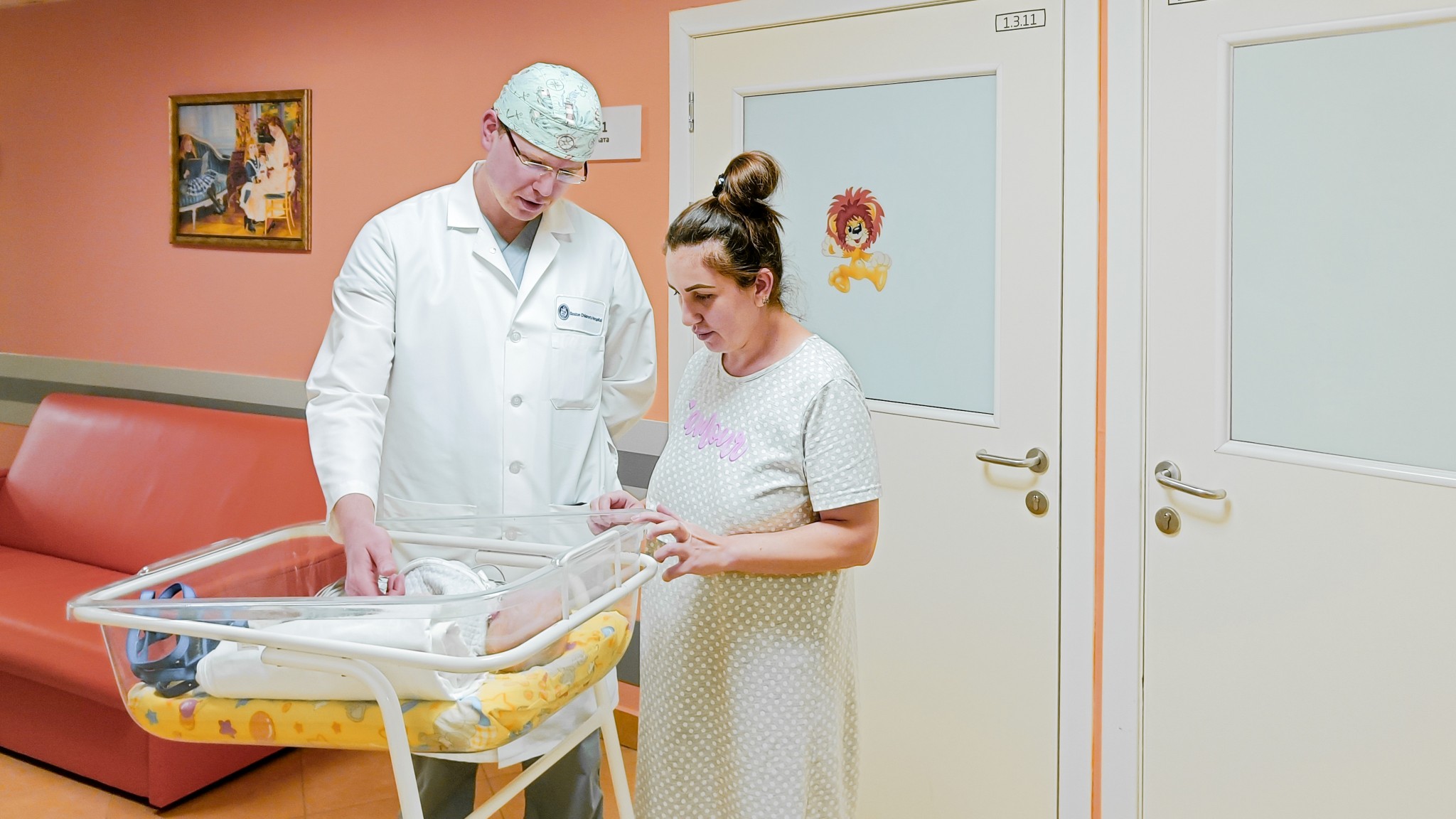
It became clear that the baby had heart problems even before she was born – fetal bradycardia was first detected at 26 weeks' gestation, and the mother's blood tests showed a high level of autoimmune antibodies. Despite conservative treatment in hospital, the fetal bradycardia persisted in utero.
Taking into account the specialized experience of Perinatal Centre, the woman was admitted to the Pregnancy Complications Department for observation and decision-making on the tactics of treatment after delivery. The ECG data at birth confirmed the presence of a heart rhythm disorder in the form of complete atrioventricular block (conduction disorder) with a ventricular contraction rate of 40-75 bpm. Unlike an adult, a baby's heart normally contracts at a rate of 120-140 beats per minute, which is necessary to meet the newborn's vital needs. If there is an irregularity in the rhythm, the baby's heart will not be able to contract at the required rate and the whole body will suffer. After birth, the baby was monitored by a team of doctors, including neonatologists, pediatric arrhythmologists, intensivists and heart surgeons.
 Taking into account the specialized experience of Perinatal Centre, the woman was admitted to the Pregnancy Complications Department for observation and decision-making on the tactics of treatment after delivery. The ECG data at birth confirmed the presence of a heart rhythm disorder in the form of complete atrioventricular block (conduction disorder) with a ventricular contraction rate of 40-75 bpm. Unlike an adult, a baby's heart normally contracts at a rate of 120-140 beats per minute, which is necessary to meet the newborn's vital needs. If there is an irregularity in the rhythm, the baby's heart will not be able to contract at the required rate and the whole body will suffer. After birth, the baby was monitored by a team of doctors, including neonatologists, pediatric arrhythmologists, intensivists and heart surgeons.
Taking into account the specialized experience of Perinatal Centre, the woman was admitted to the Pregnancy Complications Department for observation and decision-making on the tactics of treatment after delivery. The ECG data at birth confirmed the presence of a heart rhythm disorder in the form of complete atrioventricular block (conduction disorder) with a ventricular contraction rate of 40-75 bpm. Unlike an adult, a baby's heart normally contracts at a rate of 120-140 beats per minute, which is necessary to meet the newborn's vital needs. If there is an irregularity in the rhythm, the baby's heart will not be able to contract at the required rate and the whole body will suffer. After birth, the baby was monitored by a team of doctors, including neonatologists, pediatric arrhythmologists, intensivists and heart surgeons.
«These babies should be managed by a team of doctors, as a comprehensive assessment and a coordinated determination of indications for surgical treatment are required, as not every cardiac conduction disorder requires surgical intervention. During the first week of life, a negative dynamic of the clinical condition was observed with a low heart rate, and signs of increased cardiac load were detected. Inaction in this case could have irreversible consequences, and the only possible option to help the heart in such conditions was to implant a permanent pacemaker – a device that 'forces' the heart into the correct rhythm at the required rate,» — says Dr. Elena Vasichkina, Chief Researcher at the Research Department of Cardiovascular Diseases in Children.
There are a number of difficulties in performing such a surgery on a small heart. Nevertheless, the medical team identified absolute indications for the implantation of an artificial pacemaker.
«We realized that it was technically challenging to operate on such a small baby – the electrodes for the cameras had to be attached directly to the beating heart. At the time of the procedure, the girl weighed only 2,800 grams,» — comments cardiologist Ksenia Blinova.
At the age of 7 days, the baby underwent open-heart surgery and a pacemaker was implanted. Thanks to our many years of experience in treating such patients, we succeeded.
«The device is placed under the skin and the permanent leads are sewn to the heart. Of course, over time, when the battery runs out (in 5-10 years), the pacemaker may need to be replaced. We will need to make sure that the integrity and functionality of the leads are not compromised as the child grows. At the same time, the size of the device is standard (there are no devices for children),» — explains Nikolay Kotin, pediatric heart surgeon who performed the surgery.
After the surgical treatment, the specialists noted that the child's condition had stabilized and the heart function had returned to normal. The patient then was discharged home with recommendations for further follow-up. The girl's weight at discharge was 3700 grams. Three months after implantation, the pacemaker will need to be readjusted, and then this can be done less frequently – once a year, depending on the performance of the device.
